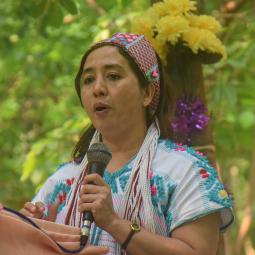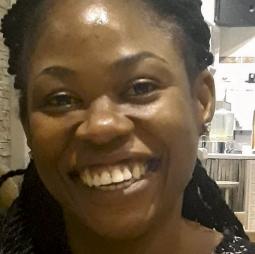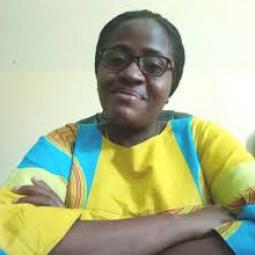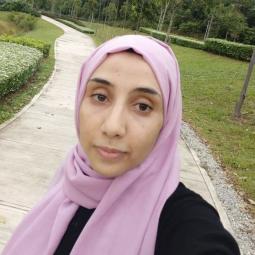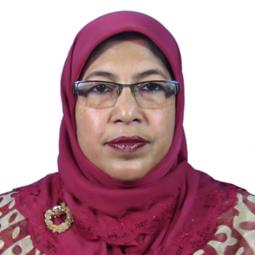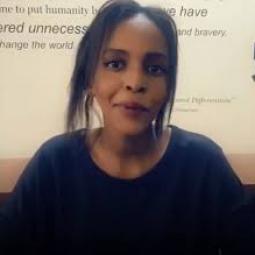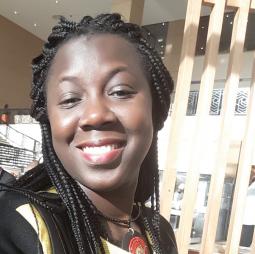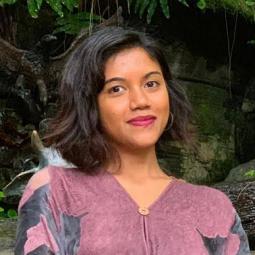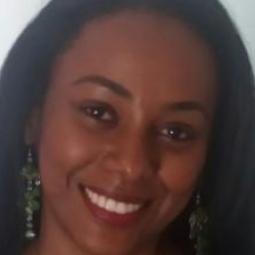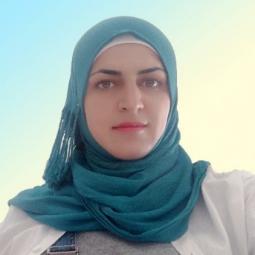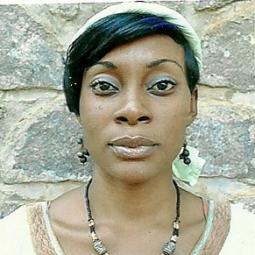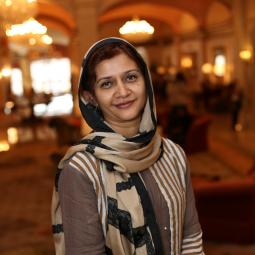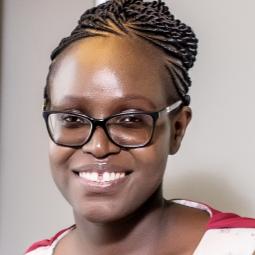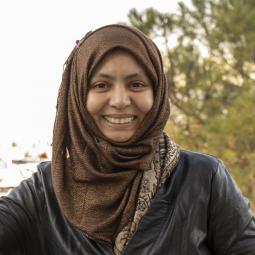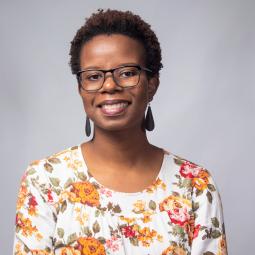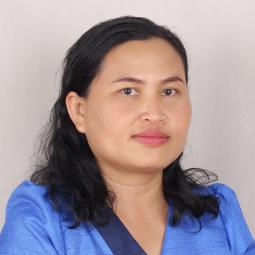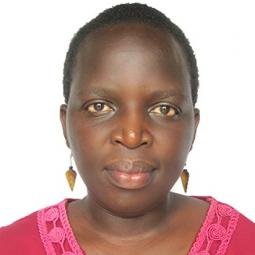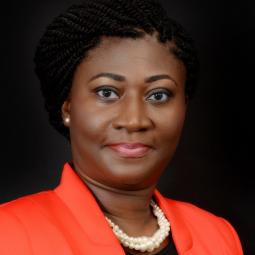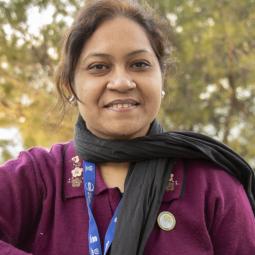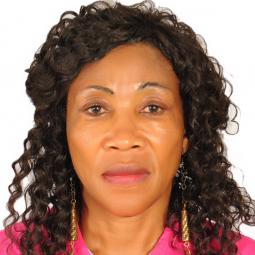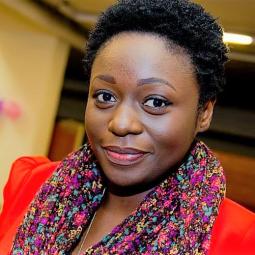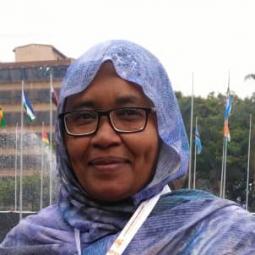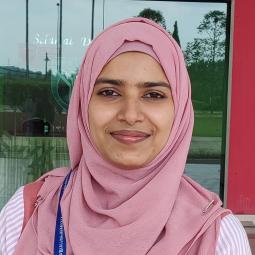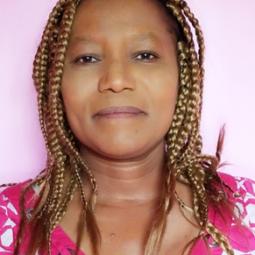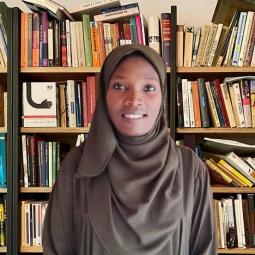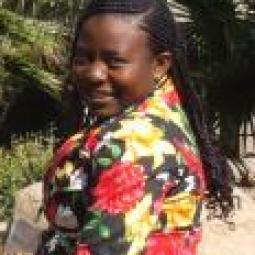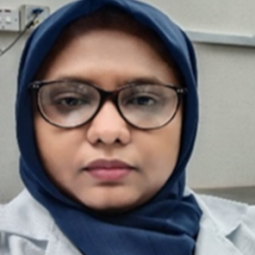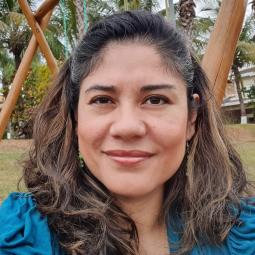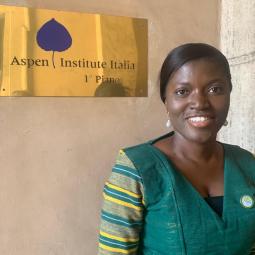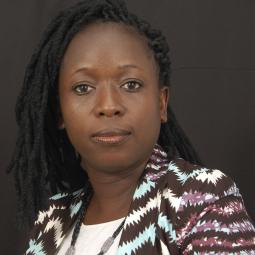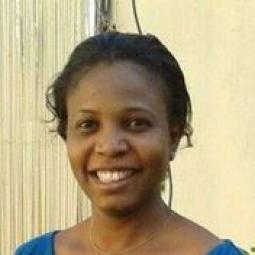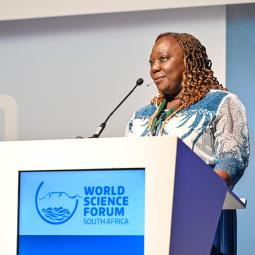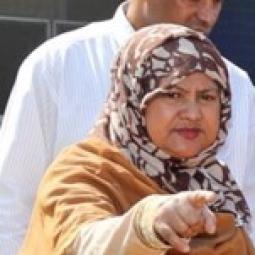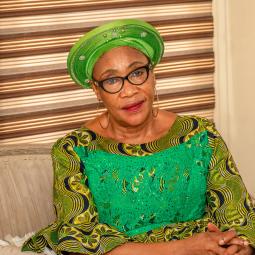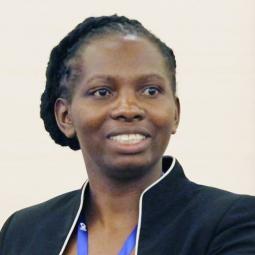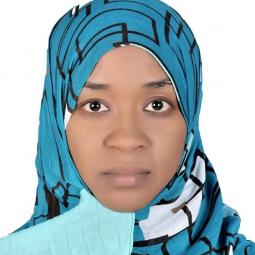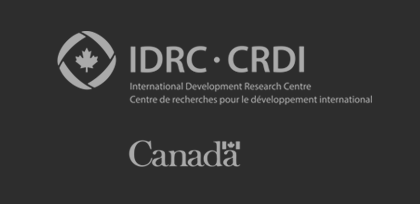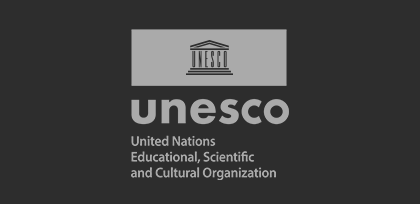OWSD NIGERIA NATIONAL CHAPTER PRESENTS The Ancestor Who Speaks is the Earth: Pumzi and the Invitation to Listen
June 09, 2022
OWSD Nigeria National Chapter University of PortHarcourt Branch Series of Scientific Communications:Maria Hamilton on The Ancestor Who Speaks is the Earth: Pumzi and the Invitation to Listen
The Ancestor Who Speaks is the Earth: Pumzi and the Invitation to Listen
By
Maria E. Hamilton Abegunde
Watching Pumzi [i]
The first time I saw the short film Pumzi (Wanuri Kahiu, 2010) I cried. I held my breath and gave gratitude for its existence. Here was work by an African woman that said everything about memory, history, healing, the past, present, and future that my favorite science fiction films over the past two decades had tried to say. Here was a film that called our attention to the results of climate change: war, devastation, isolation from each other, the elimination of the natural world; yet it offered a solution to repair the damage that humans had done to that world – if we listened.
While I am aware that Kahiu was not the first to address these topics – consider Octavia Butler’s novel Parable of the Sower (1993) and the reforestation advocacy of Nobel Peace Prize winner (2004) Wangari Maathai – in 2014 I had never seen a movie like this. Each frame was African and African woman body-centered and relied not on spoken dialogue, or racial and gender tropes, but on dreams of an unseen world, a memory, an ancestral calling that offered hope.
The film is situated 35 years after World War III, the Water War, that desiccated the earth. At its beginning Asha, the main character and the scientist in the virtual natural history museum, receives a box with only longitude and latitude as the return address. Inside the box is a soil sample, which she discovers contains a high water content and is without radioactivity. Asha is surprised: The community has been taught that there is no water outside and, therefore, no life. After inhaling and touching the soil, Asha falls asleep and has the first of many memories.
Asha’s newly embodied knowledge guides her and challenges the governing council’s beliefs. But, since she has touched the soil, the soil is now part of her body. As a living entity searching for other life, the soil has bonded itself to her. Despite her dream suppressants, Asha dreams of the earth before the war; she remembers water; she remembers what it is like to be alive fully, not just a body functioning for and at the will of others. She stops believing what she is told and questions the governing council, at least one of whom seems to be curious. Most importantly, she sees herself in the soil and outside the community’s container.
Pumzi shows us a dystopian, apocalyptic future in which the shortage of water is so great that humans must rely on their own bodily wastes and fluids to hydrate themselves and others. The labor and laborer needed to produce water are central to the movie as is the way the council mandates everyone take their dream suppressants. You should have taken your dream suppressants one of the council members says to her. When Asha insists that she has been taking them, and shares that she will plant the community’s “mighty seed” in the soil she is quickly and unceremoniously removed from her position and the museum.
While the socio-political dynamics of the narrative and Asha’s choice to leave the container’s safety in search of fertile soil and the other life it could possibly contain (like humans), I remain drawn to what else the film offers us: a vision of what is possible when we understand that multiple types of technologies can help us remember and honor the co-creative connections between humans and the earth; an invitation to see human and earth/tree bodies as rooted together, interdependent. Asha is, after all, a scientist, but despite her scientific proof, the community council ignores her claims. As someone committed to finding ways to grow new life, what choice does she have but to find an answer in the very place no one expects to find one?
Dreaming to Re-member Connections
When I finally recovered my breath and awareness after my first experience of Pumzi, I recalled the words of historian David Blight to a small group of us at the UNESCO annual Lest We Forget conference on the Transatlantic Slave Trade: “Memory is the way in.” The moment that the soil enters Asha’s body, memory is the way in, and the memory begins with a dream. The soil shows her is that there is life. The earth is alive outside the community and waiting for Asha to find it, go back to the others, and share this knowledge with them.
The technology of dreaming is one that our ancestors understood and utilized, and one that Pumzi is unafraid to access. More specifically, dreaming from several African traditions focus on the ability of dreams to offer guidance for a community via the individual. In this case, individuals recognize dreams as coming from a place that the ancestors occupy. This is what Nwoye calls “…the phenomenon of triangulation in dreaming where dreams originate from another source to give messages to the individual for the benefit of others.”[ii]
When this happens, the benefit arrives when the individual trusts the information being received or given, and is willing to share it with the community. Asha receives a dream, but the memory embedded within it is knowledge she cannot have, even through her research, because it is likely that she was born after the war and has never seen earth or water in their natural forms.
What happens after Asha’s removal reminds us how co-creative connections between humans sustain life. The soil dreams Asha and Asha dreams the soil. But, it is Asha’s kindness to the floor cleaner – perhaps both their dreams of a better and different life - that leads directly to her escape from the community in search of the soil’s origins. As a scientist with privileges, and under the watchful eyes of the council and guards, Asha found creative ways to assist the floor cleaner, such as sharing her bodily fluids with them so they would have enough to drink. We see that this is a relationship born out of necessity, compassion, and gratitude. When Asha is removed from her space, the floor cleaner repays this kindness by hiding a compass for Asha, and giving her the means to escape.
It is notable that the characters in the film do not verbally speak with one another. They communicate telepathically, and the council communicates via broadcasts that remind everyone to do their share to generate power. By focusing on non-verbal communication, Kahiu reminds us that there are other ways through which we can receive and share knowledge. In a film that highlights the separation of bodies and their use for labor, Asha and the floor cleaner resist being separated from and invisible to each other.
Once outside, Asha’s connection to the soil pushes her forward, growing seed hidden close to her body, as if the dream and the soil are waiting to manifest in the very spot in which she will eventually rest. Asha’s search for life is not for herself. We know that if she could, she would return and bring others back with her. After 35 years, who would not risk seeing earth and sky, without radioactivity? We know that even the mirage is the dream calling Asha to drawer closer to the life she cannot see, one that promises the community not only water, but freedom.
Breathing to Birth New Life
Pumzi, meaning breath in Swahili, asks us to consider what it could mean if we choose to listen to the dream, walk towards it, not as individuals, but as community? What if we trusted the dreamer and committed to honoring and following the breath of all living things? Asha, in her acceptance of what is happening, asks us to consider how humans and earth touch each other and how our histories – past and future – are linked. First, I imagine, we must believe that life exists and is possible in places we’ve never considered, and that all beings are worthy of life.[iii] By the end of the movie, we know that earth life and human life are inextricably connected by body, breath, and soil.
After watching Pumzi the first time, I sat still. I allowed my breath to expand and rest in my body. Ten years before, I had taken a class to learn how to teach about Africa, taught by a collective of African scholars. One day, I read about how many people across the continent died because of drought and other non-war related disasters. I don’t remember how many, only that it felt that it was as many as the trees on the continent, a number so large that I could not fathom that many people in one day dying by what I believed could be avoided. Unable to imagine this, or perhaps because I was afraid to imagine it and what it could mean in my own life, I crawled from my living room to my bedroom and into my bed where I stayed for hours in deep mourning.
That day in my bed, I did not know that my first trip to Africa would be to Juba, South Sudan in 2016, and that the day of my arrival I would watch UN peacekeepers struggle to find shade under their backpacks because there were no trees under which they could hide from the midday sun, and the ground was too hot and dry from them to sit. This seems unbelievable now, but that day on the tarmac, I did not know that there are more than one billion trees (including small shrubs) in West Africa alone.[iv] [v] I did not know that the sycamore fig tree was sacred to Maathi’s family, and that it is among the oldest of trees, like the baobab, to be on the continent. I did not know that Democratic Republic of Congo is one of the largest forested areas of Africa, or that the Sahara may once have been green and filled with rivers and forests.[vi]
I did not know that Mother Trees hold so much knowledge about the forests in which they were birthed, and about other trees and the ecological systems in the soil that activate their roots. I did not know that climate change, which had already changed the content of soil, was altering the memories of trees and how they talk to one another.[vii] Which, for me means, that how we as humans dream and remember has changed. If we have concrete and no soil in our cities, if we can no longer plant trees in our cities, what will be left to remind us that we are just small beings on planet earth? What will be left to remind us that we have roots that go deeper than DNA tests?
Suzanne Simard shares how the memories of trees are coded not only in their rings, but also in their genes and seeds.[viii] Pumzi invites us to remember what our ancestors knew, what our elders know, what children assume, and what scientists continue to learn: trees produce oxygen, clean the air we breathe, conserve water and soil, and bring us beauty. In short, without trees, we have no breath, land, shelter, food, or water. We have nothing to look up to in wonder. Without trees, we have no earth. We and trees breathe with each other. Is it the case, then, that we can remember how to heal each other together?
Listening to the Dream to Live
In the film’s last minutes, we learn that Asha has been searching for a Mother Tree. In fact, by the film’s final frames, one comes to understand that, perhaps, Asha is one of many Mother Trees. Her body, the soil, the seed: they are inseparable. I think of the body as one of the primary archives in the world. Every pain and joy we’ve experienced is stored somewhere in our bodies, minds, and spirits. Even when we have forgotten something, if we are not careful, our bodies will remind us of it when we least want to be reminded.[ix]
What role, then, does the human body play in re-connecting us to ancestral memories of the earth, healing, re-vitalization, growth, and sustainable/accessible development? What happens if we sit on the roots of a tree? Or step inside a tree, like the giant Redwoods? What happens if we allow ourselves to become still and quite enough to breathe while leaning against a tree, asking its permission to do so, trusting that it will hold us up in our exhaustion? What happens if we remove our shoes and walk on the earth for fifteen minutes, allowing soil to cover our feet, hide our manicures? What happens if we plant and grow the food we eat?
My experience tells me that doing any of these things will change our lives. In 2003, I returned to the US from one of several trips to Brazil. I stepped outside into the parking lot behind my building in Chicago. When my feet touched the concrete, after two months of walking on beaches, on sidewalks where mangoes and avocadoes fell plentifully, it was as if the soles of my feet were extending and vibrating back to a source. I could smell the salt water of the island that was now my home. More than that, I could feel the roots of trees in that parking lot whispering to trees on the island, in the ocean, and all the way back to the island where I had grown up; all the way up my ankles and into my heart.
As a Black Caribbean descended woman living in the US, one who practices an African Traditional Religion, I knew then what Asha would come to know: every breath I take is connected to other living breathing beings and, in the absence of a common language or any language at all, the dream from a common ancestor – the earth – would find me and remind me that I am soil and water formed into this body. You and me, we are made from and for this earth.
I have watched and taught Pumzi every year since I first saw it in 2014. By far, the hardest time to teach it was during 2020 and 2021. It was real in so many ways, the same way that Butler’s Parable is real. But, the timing was perfect for the questions that kept returning to me: Was it this dreaming that made my ancestors live through the Middle Passage and what followed? Was it their understanding of how breath connected every living thing that allowed them to remember and embody practices that reminded them that the earth and trees are sacred, more than places for “strange fruit,” and that at the end of time life will continue if we remember this connection?
At the end of Pumzi I am always left thinking: only an African woman would offer us hope in this manner (thank you Wanuri Kahiu); and only a Black woman would offer us rebirth through the very essence of her body, her last bead of sweat, her every sinew; her last breath. Only such women would ask us to believe in – and try to live - a dream no one else can see for the good of all who will follow. Had I not seen Pumzi, I would not have understood the dream visible in this sign when I saw it, hanging on a tree along the Nile on that trip to Juba: Shhh.. A tree is growing in South Sudan. I am listening. Are you?
REFERENCES
[ii] Nwoye, Augustine. 2017. “The Psychology and Content of Dreaming in Africa.” Journal of Black Psychology. Vol. 43(1), 3-26. doi/pdf/10.1177/0095798415614159.
[iii] Baker, Courtney. 2015. Humane Insight: Looking at Images of African American Suffering and Death. Illinois: University of Illinois Press.
[iv] “An Unexpectedly Large Count of Trees in the West African Sahara and Sahel.” (NASA ORNL DAAC): Link HERE. The Oak Ridge National Laboratory Distributed Active Archive Center (ORNL DAAC) for Biogeochemical Dynamics is a NASA Earth Observing System Data and Information System (EOSDIS) data center managed by the Earth Science Data and Information System (ESDIS) Project.
[v] “How we mapped billions of trees in West Africa using satellites, supercomputers and AI.” Link HERE.
[viii] “Mother Tree and the Social Forest.” Link HERE. And “Trees Talk to Each Other. ‘Mother Tree’ Ecologist Hears Lessons for People, Too.” Link HERE.
[ix] Van Der Kolk, Bessel. 2015. The Body Keeps the Score. Link for more info HERE.
Contact Details:
Maria E. Hamilton Abegunde, Ph.D.
Department of African American and African Diaspora Studies
Indiana University
https://www.linkedin.com/in/maria-hamilton-abegunde/
Maria Hamilton Abegunde on facebook.

